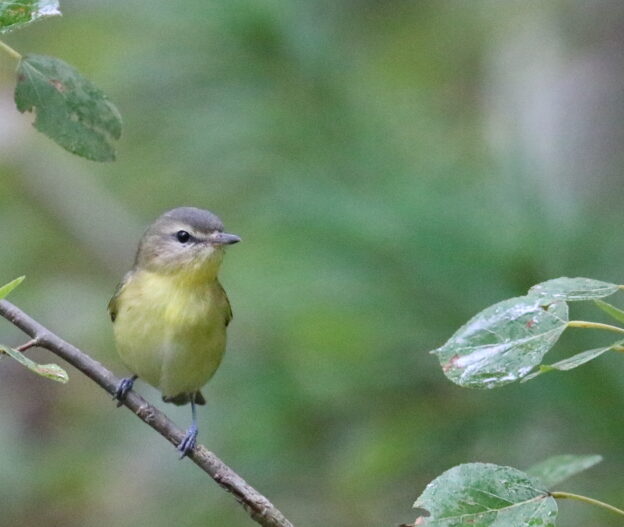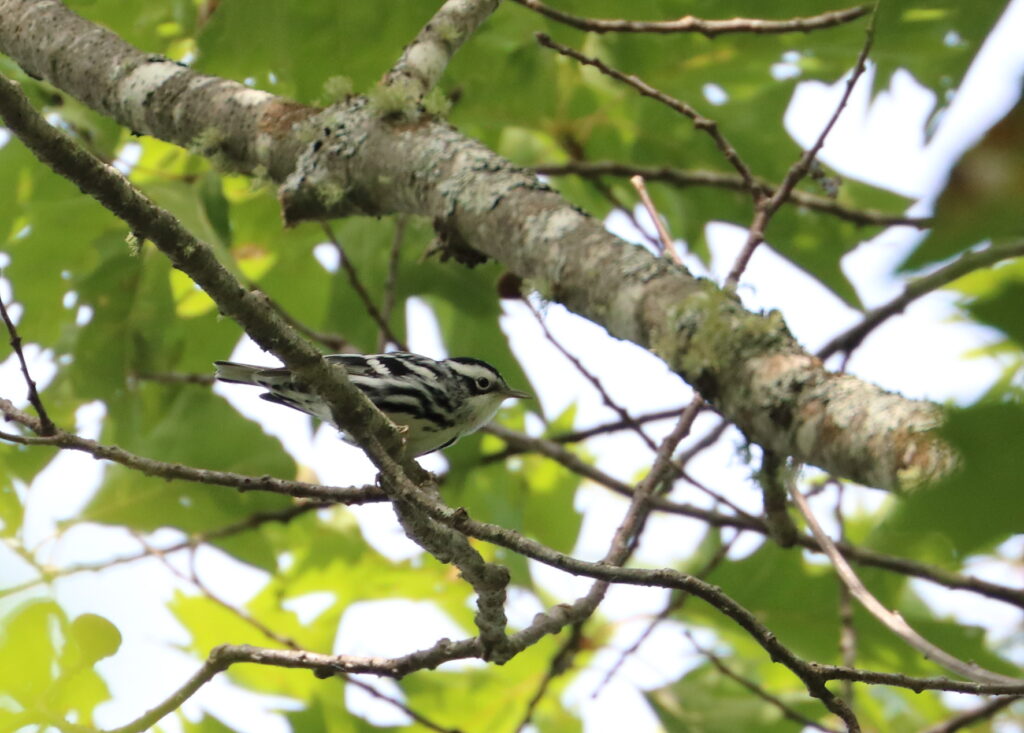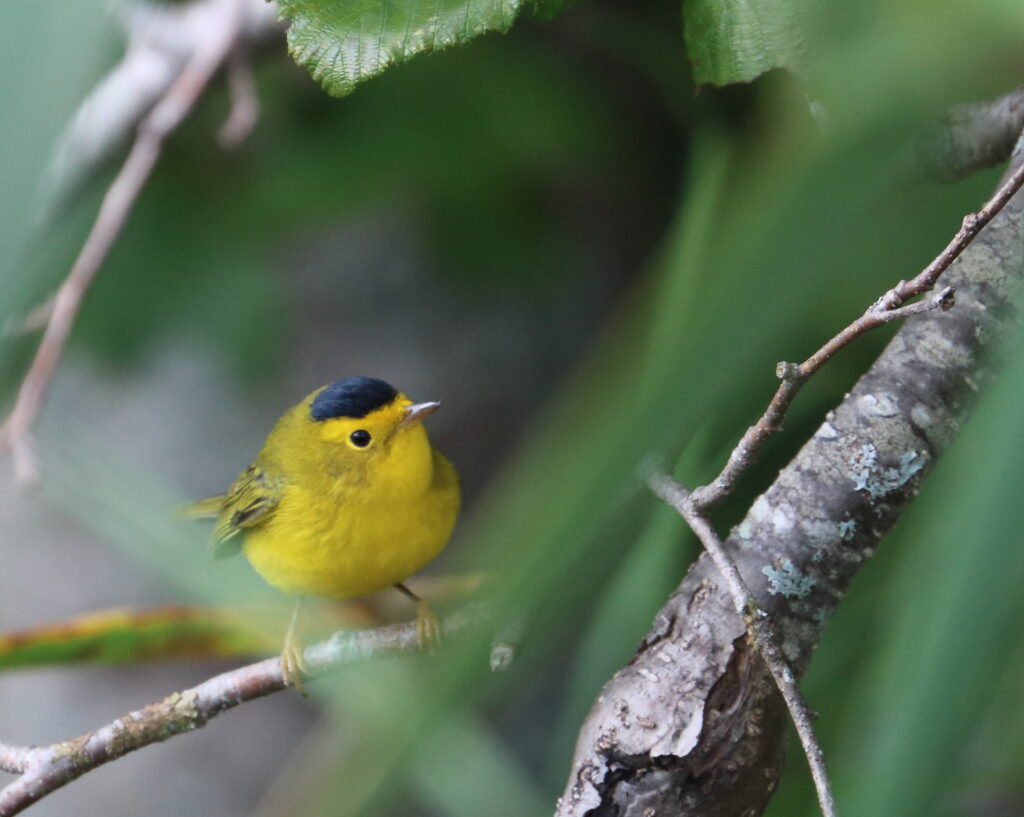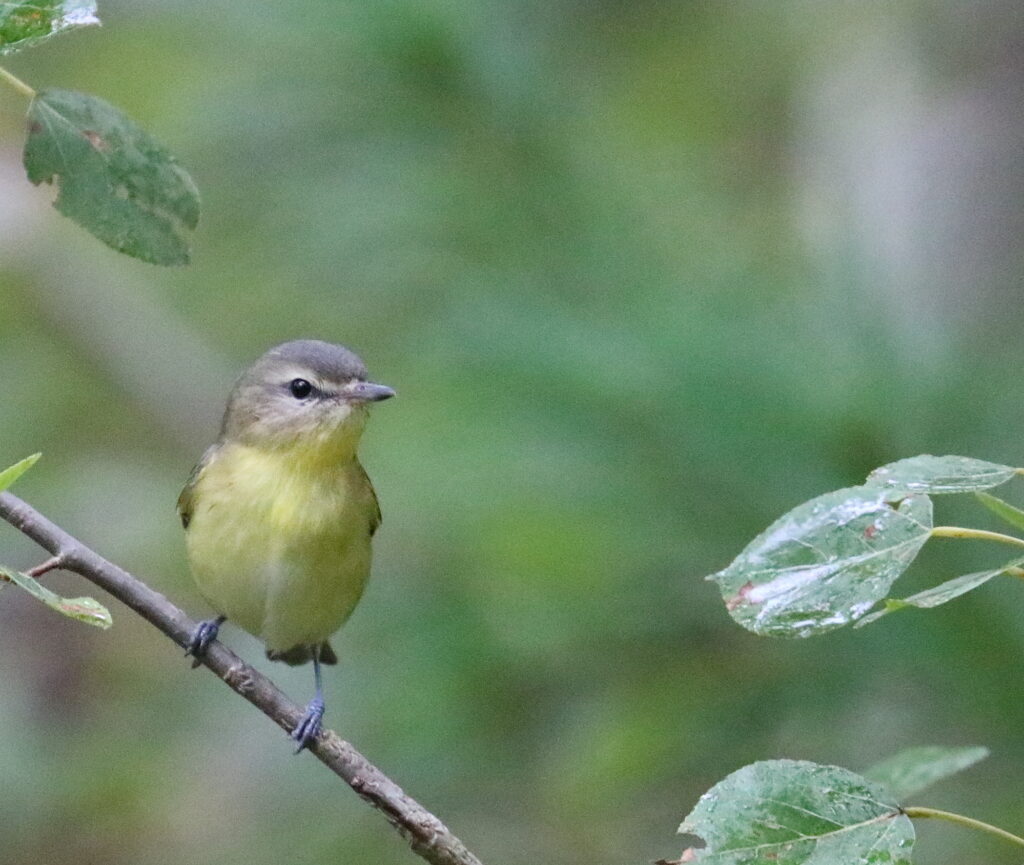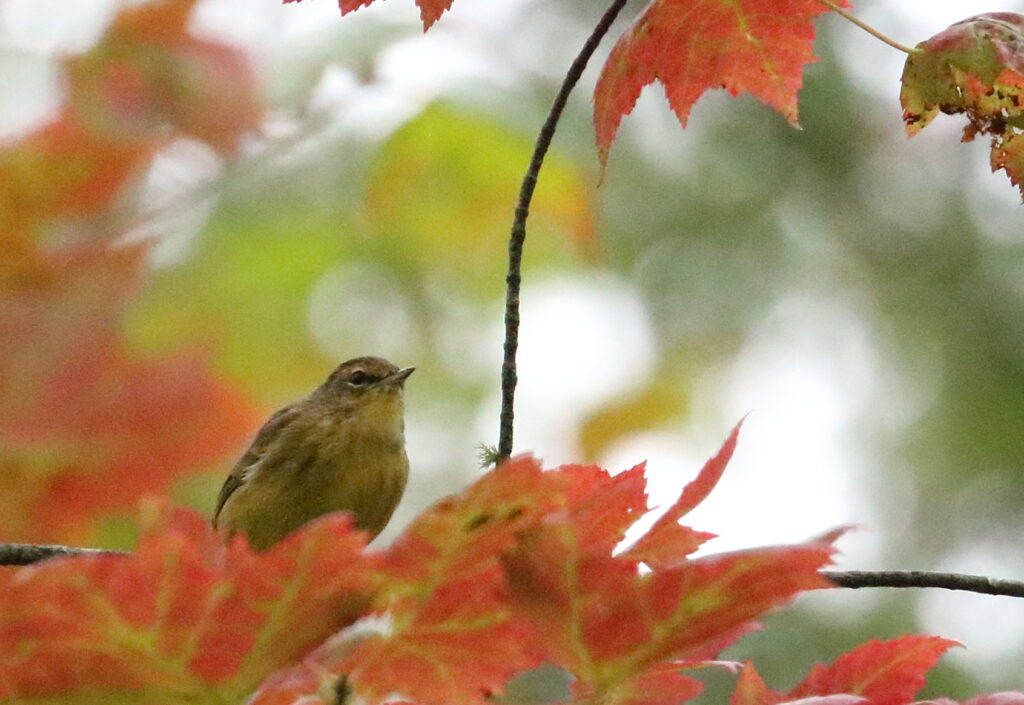One thing that surprised me about the birds in Maine is that while many of the state’s breeding birds are different from Montana’s (obviously—did you read the warbler post?), many of Maine’s year-round and winter birds are the same since Bangor, Maine and Missoula, Montana are at very similar latitudes. This means that I can chase birds like Northern Shrike and Snow Bunting in both states, and I will be doing so given that I’ll be spending a portion of my winters in both states over the next four years! Many of the nemeses I had in Montana also carry over, including one that I just happened into while checking my eBird alerts last week.
If you read my dad’s and my blogs last fall, you know that we worked our butts off to get shorebirds in western Montana. While we did find quite a few, our lists still contained a massive hole by the end of shorebird season: American Golden-Plover. We went to the place that they were most frequently-reported in the state (Pablo National Wildlife Refuge) at least four times, just missing the birds by a few days each time. Ironically, I already had seen the other two species of golden-plovers: Pacific (which I got in Hawaii) and European (which I got in Iceland), despite living within the range of American. So when an American showed up on a mudflat less than an hour from the University of Maine, I began talking to everyone I knew that had a car. I convinced Hayden and Nick, two sophomores and fellow nature-lovers I’d gotten to know during the past few months, to make the trip to Sebasticook Lake with me, and that Saturday we got up early and headed west.
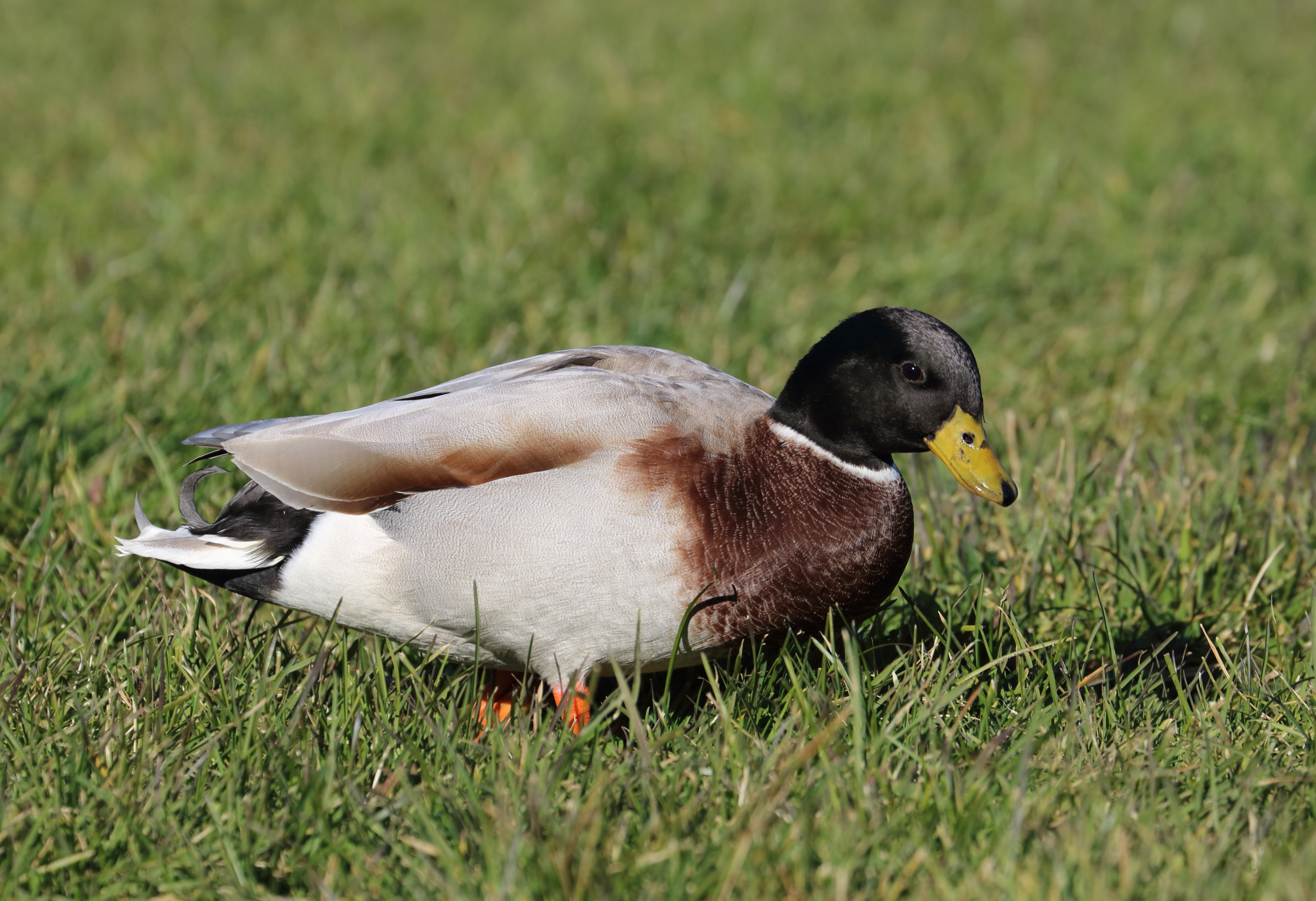
Once we arrived at the lake we started pulling off at every possible point to scan the water and shoreline for shorebirds, waterfowl or anything else that happened to show up. After all, my Maine list is still fairly short, so many common species would still be new for me within the state. In one bay we found a pretty large flock of ducks including some Northern Shovelers that should’ve been much further south and seven American Black Ducks, which were lifers for me!
A few stops later, we found ourselves staring at a massive field of half-frozen mud. The plover had been reported here, along with several dozen Snow Buntings, which I would never pass up the chance to see. Lacking a spotting scope, the three of us just began walking across the mudflat towards the south end. While I scanned the area for shorebirds, Hayden and Nick marvelled over the freshwater mussels and snails that had been exposed by the lake’s receding water. The two boys were Marine Science majors, and in the absence of birds, they taught me a whole lot about freshwater and marine ecosystems. After getting to the other side of the mudflat without seeing anything other than the usual suspects (Ring-billed Gull, Great Blue Heron, Bald Eagle, Double-crested Cormorant), we turned around and began the trudge back to the car. However, upon turning around both me and Nick spotted a small bird lift off on the opposite shore from us. After finding it in my binoculars I concluded that it was definitely a shorebird, but much too far away to distinguish anything else. We saw where it landed though, and began walking, slightly more quickly than before, in that direction.
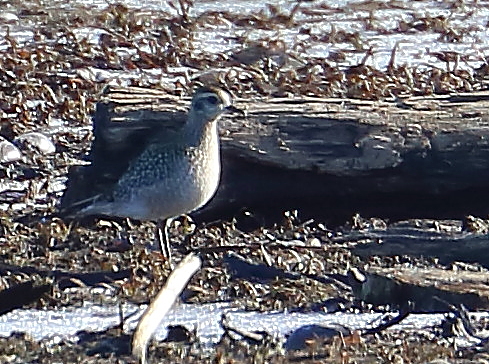
About fifteen minutes later we got there. All three of us began scanning the mudflats, but finding the bird seemed a bit hopeless. For one, it was a small brown bird hiding amongst a large brown background. And secondly, it easily could have flown away during our trek to where I’d last seen it land. In a last attempt, I played some American Golden-Plover calls on my phone. Suddenly, me and Hayden spotted movement about twenty yards in front of me. I raised my binoculars and there it was: my number one nemesis bird for the last year! The bird was sporting a nice golden-brown nonbreeding plumage and foraging around a log embedded in lake muck, and gave me the impression of a very dainty Black-bellied Plover, which is, taxonomically, basically what it is! I stood in place for at least twenty minutes, firing off photos and admiring the bird that we’d somehow just found. At one point I turned around to see that two more birders had set up their scope behind us and were watching it! It also took at least ten minutes to discover it, but at some point a Pectoral Sandpiper (another late migrant) had joined the plover and was foraging alongside it, although I didn’t pay this second bird very much attention. Eventually I could detect Hayden and Nick getting bored, so I said goodbye to the plover, briefly introduced myself to the other birders (who turned out to be graduate students at the University of Maine!), then we headed out. After a few more spots to try for Snow Buntings, which we did not find, we headed back to campus.
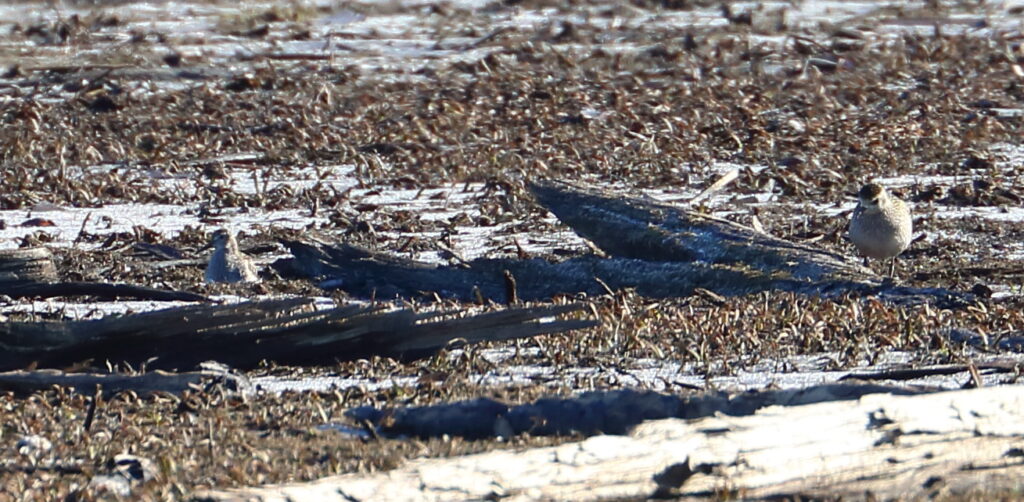
A few days later, me and Hayden found ourselves in a car with those two grad students we’d met at the American Golden-Plover stakeout! I’d gotten in contact with Liam Berigan after hearing that he and Meredith Lewis were going down to Rockland, Maine to chase the Barnacle Goose (either a Code 3 or 4 for the ABA) that had shown up at an elementary school the week before. We decided to carpool, and were now spending our Veteran’s Day driving down the coastal Highway One for the goose. Once in Rockland, we rolled up to the school and immediately spotted the rarity—one that at least fifty people had chased throughout the week—feeding in a field with a few dozen Canada Geese. The goose was smaller than the Canadas, with a much cooler color template and a tiny black visor. Despite the fact that I’d seen the species before in Svalbard and Iceland, I still ogled at it alongside Hayden, Meredith and Liam, for all of whom it was a lifer. It was one of the easiest chases I’d ever participated in.
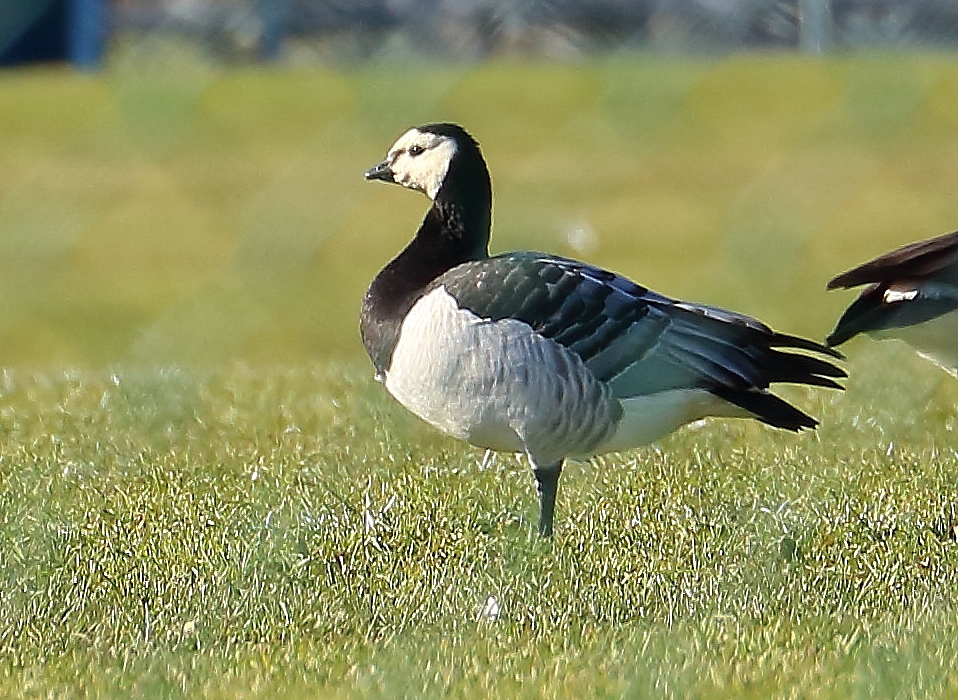
We hit a coffee shop in Rockland to celebrate, then headed to the coast, which was about a hundred yards away, to look for sea ducks. We found a pair of Surf Scoters and several Black Guillemots in the harbor, then scoped a raft of Common Eider and not one, not two but seven Common Loons from the Owl’s Head Lighthouse. On the way back to campus, we stopped at a lake to try and get Ruddy Duck for Meredith and Liam’s year lists. We missed the ducks but saw a large number of coots, which was unusual so far north in Maine, plus two Bonaparte’s Gulls and a Mallard with a deformed head!
Riding on last week’s high, I decided to hit the Cornfield Loop this morning. After the warblers had left the state, the hotspot’s numbers had fallen dramatically, so I hadn’t been in several weeks. However, this morning started off with a lone Bohemian Waxwing perched atop a tree in the Littlefield Garden, one of the first seen in the state this fall! In the marsh I had a late flyover American Pipit, another state bird for me, and the walk concluded with a cloud of Snow Buntings lifting off the western side of the field, making their bubbly calls as they flew over my dorm and out of sight! Despite the fact that Snow Buntings are more common in Maine than in Montana, they lifted my spirits and continue to enforce that fact that birding doesn’t slow down in winter. I’m excited to see what’s next!

